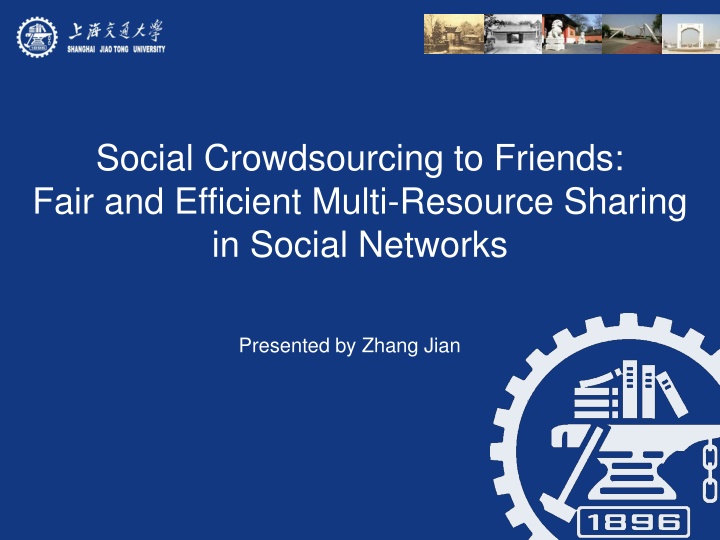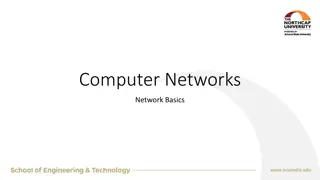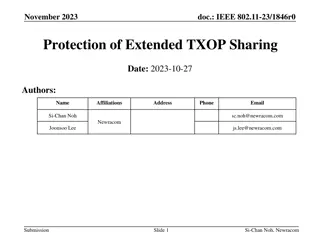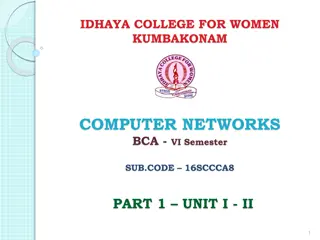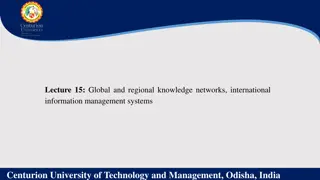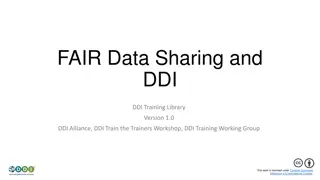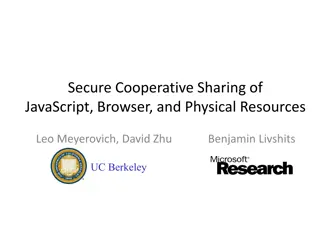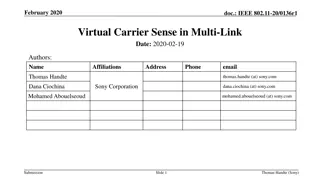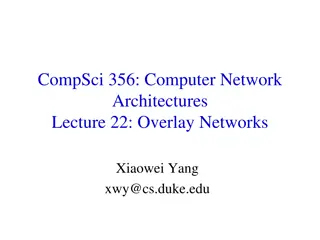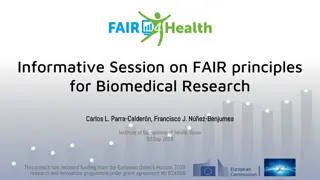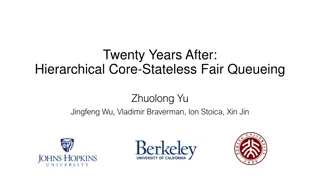Fair and Efficient Multi-Resource Sharing in Social Networks
This paper explores the concept of fair and efficient multi-resource sharing in social networks, presenting a credit market-based framework for charge-free computing resource sharing. It addresses the challenges of escalating data volumes and the need for collaborative resource allocation strategies. The model foundation includes user graphs, tie strengths, resource demands, idle resources, and a credit system for fairness and efficiency.
Download Presentation

Please find below an Image/Link to download the presentation.
The content on the website is provided AS IS for your information and personal use only. It may not be sold, licensed, or shared on other websites without obtaining consent from the author.If you encounter any issues during the download, it is possible that the publisher has removed the file from their server.
You are allowed to download the files provided on this website for personal or commercial use, subject to the condition that they are used lawfully. All files are the property of their respective owners.
The content on the website is provided AS IS for your information and personal use only. It may not be sold, licensed, or shared on other websites without obtaining consent from the author.
E N D
Presentation Transcript
Social Crowdsourcing to Friends: Fair and Efficient Multi-Resource Sharing in Social Networks Presented by Zhang Jian
OUTLINE Introduction Model Foundation Resource Allocation of Idle Users Users Level Task Distribution by Platform Platform Level Simulation Conclusion 1
INTRODUCTION The data is accumulated with an explosive speed and till 2017 the annual amount of global data will be 7.7 ZB. So how to deal with it? (apparently many tasks can t be afford by a single device) 1.Cloud computing 2.Social crowdsourcing 3.Others maybe 2
INTRODUCTION High maintenance costs & data/device centralization (Cloud computing) clumsy for scientific computing, collaborative sensing, etc. efficient Massive potential & a large amount of idle resources (social crowdsourcing) 3
INTRODUCTION The major work of this paper is to build a credit market-based service framework to realize charge-free computing resource sharing in social networks. How can we accomplish the system with no charge? (Of course, taking no account of the maintenance cost or other expenses of labor) 4
MODEL FOUNDATION n users Each user s ego network is denoted by a graph ( , i i G V E = : {1, = ( , }) n U i N i ) i 6
MODEL FOUNDATION The set of users who have friendship with node v The tie strength between v and Ui User Ui s demand for resource k per task ( ) k ir ( i i r r = { | i v V } v i iv = (1) (2) ( ) m , , , ) r r i i Node v s idle resources within the sharing period = ( ) k vc (1) v (2) v ( ) m v c ( , , , ) c c c v The credit system using symbol and i C j 7
MODEL FOUNDATION For the platform, they need to balance fairness (i.e. fair resource allocation) and efficiency (i.e. achieve workload balance) The maximum number of tasks that Ui gets at node v The amount of normalized resources that Ui receives from node v is The concept of Dominant Resource Fairness (DRF) iv x ( ) k r x = ( ) k iv i iv ( ) k v c 8
MODEL FOUNDATION Fairness DRF is not exactly fitted, we must introduce a new concept called SER (Socially Equivalent Resources) to modify it. The amount of type-k SER share from v to Ui is = ( ) k iv vj j ( ) k iv ( , ) v vi The dominant SER share required by user Ui to process one divided task at node v is vi ( ) k r c = max ( k M , ) i , i v vi ( ) k v So the exact type-k resource is called dominant resource 9
Resource Allocation of Idle Users ( ) k v Here is a simple algorithm to calculate the task distribution. , j i v j S j v The overall time complexity is O(|V|) L ( ) k v 1 L = argmin( k M ) k = min( k M ) ( ) k j iv ( ) k r r j S v v , , j v 10
Resource Allocation of Idle Users Efficiency Proposition above demonstrates that the efficiency of DRF is relatively low, in terms of social welfare. So we introduce a new but similar concept called -DRF. 11
Resource Allocation of Idle Users One instance: Suppose node C has 18GB idle ROM and 9 units of CPU C s friend A requires <8GB ROM, 3-unit> per task C s friend B requires <1GB ROM, 3-unit> per task C has social ties of the same strength with A and B, SER share is normalized by divided 2. 13
Resource Allocation of Idle Users 1 Dominant SER Share of User A 0.9 =0.5 0.8 =0 0.7 0.6 =0.2 0.5 Resource Constraint 0.4 0.3 0.2 =0.2 =0.5 0.1 0 0 0.2 0.4 0.6 0.8 1 Dominant SER Share of User B 14
Simulation A trace-driven simulation using the dataset from Facebook: Ten user s ego networks which partially overlap with each other, each user has hundreds of friends. An undirected and weighted graph, and the edge weight is determined by 42 features via profile and the number of common friends. 10 Mobile phones: resources are CPU,RAM and ROM, even with power constraint. 15
Simulation 4500 Social Welfare (Sum of SER) 1 4400 0.98 Efficiency!Optimal 4300 0.96 Efficiency Ratio !DRF DRF 4200 0.94 Fairest 4100 0.92 =162 0.9 4000 0 0 50 50 100 100 150 150 200 200 The figure shows the efficiency of the -DRF by observing the social welfare. When reaches , the optimal result is obtained, then stabilized at the peak. ) 162 = max (1, , v i vi 16
Simulation =0 (Fairest) =5 10x 104 15x 104 2000 1500 1500 10 1000 5 1000 5 500 500 0 100 0 100 1 2 3 4 5 User 6 7 8 9 1 2 3 4 5 User 6 7 8 9 Dominant Resource Degree of Socialization =50 =200 (Efficiency!Optimal) 15x 104 15x 104 1500 1500 10 1000 10 1000 5 500 5 500 0 100 0 100 1 2 3 4 5 User 6 7 8 9 1 2 3 4 5 User 6 7 8 9 The figure shows the influence of on the allocation results. Apparently, larger sacrifices the social fairness. 17
Conclusion Design a crowdsourcing service which fully utilizes the computing potential of mobile devices and social networks. Design a low-complexity algorithm for idle resource allocation and workload distribution within social network. The algorithm achieves a lot, not only the fairness, but also many ideal propositions. Develop an extended demonstration to improve the efficiency at the cost of a certain degree of fairness. 18
Thank You!
Q & A
